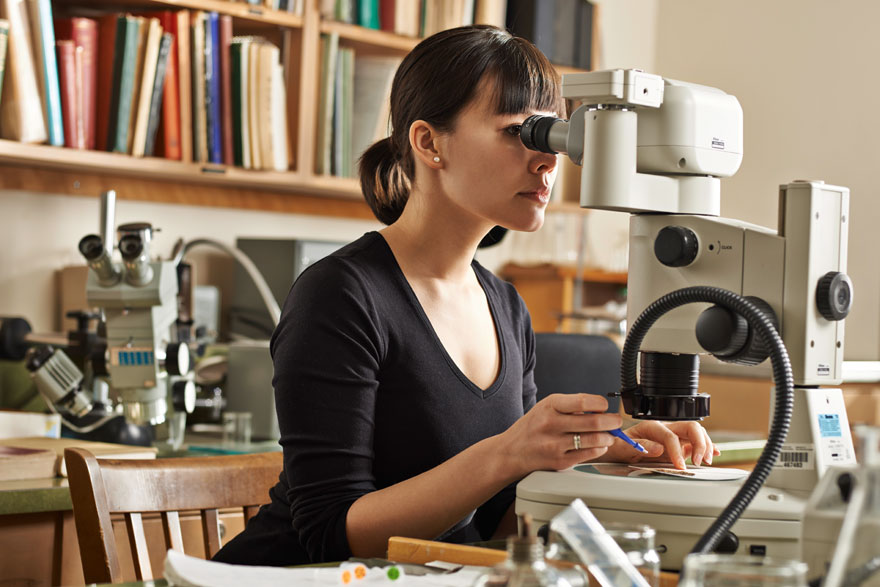In 1886, James Fletcher, an accountant at the Canadian Parliamentary Library who had been appointed an honorary entomologist at the Department of Agriculture three years earlier, donated his personal collection of insects and plants to Canada.
Today, the collections started by Mr. Fletcher's donation are widely recognized as among the biggest and best in the world. Held by what is now Agriculture and Agri-Food Canada (AAFC), the Canadian National Collection of Insects, Arachnids and Nematodes alone holds more than 16 million specimens. Many of them are unique—the only known representatives of their species in any collection in the world.
The National Collection of Vascular Plants—properly known as a herbarium—includes over 1.5 million specimens of dried plants—some of them close to 200 years old, while the National Mycological Herbarium holds about 400,000 dried specimens of fungi, including many plant pathogens on their host plants.
Not just museum pieces
These and other collections held by AAFC are much more than curiosities. They are in constant use by researchers from Canada and around the world—often for purposes the people who collected the specimens could never have imagined, from offering clues about the climate at the time they were grown to providing DNA to help protect Canada's agriculture industry.
Dr. André Lévesque, a research scientist at AAFC and scientific advisor for a major research project funded by the Government of Canada's Genomics Research and Development Initiative (GRDI), says the herbarium is proving to be a very valuable resource.
Mining for DNA

Quinn Eggertson, AAFC Research Assistant, collecting herbarium samples for DNA extraction.
"As part of the GRDI Quarantine and Invasive Species project, we are building a database of DNA sequences from the thousands of pests and pathogens that can damage food crops," says Dr. Lévesque. "With this information, when something suspicious is detected in a shipment of wheat, for example, we can sequence its DNA, match it against the DNA sequences in the database, and know very quickly whether it is a serious problem or something harmless."
Different species of fungi that attack plants can be especially difficult to distinguish from one another.
"We are fortunate that, over the years, researchers collected thousands of plants, including weeds, that showed signs of disease. We are now mining the collection for plants infected with many species of fungi to extract and sequence their DNA," says Dr. Lévesque, "This is information that will help us provide a positive identification of different species of fungi in the future."
Takes all kinds to make a good database
Dr. Lévesque says it is not enough to include only the harmful species in the database. "In 1996, for example, a fungal disease called karnal bunt was found in wheat in the southwestern United States. It makes the wheat unmarketable—most countries won't accept it and that one small discovery cost the U.S. some $250 million in exports,"Footnote 1 says Dr. Lévesque.
The disease has never been detected in Canada, but the risk it could be detected by mistake is high.
Dr. Lévesque explains that even at the molecular level, karnal bunt is very similar to a fungus that is actually beneficial in that it attacks a common weed. "When you look at the DNA bar code for karnal bunt—the few sequences of DNA from the genome that are used for identification—it is almost identical to the bar code of the harmless species. There are about 650 base pairs in the bar code, and only one pair is different between the two."
"That is why we continue to sequence the DNA of the specimens of fungi that we have in the herbarium, whether they are harmful or not—work that we could not do without the funding provided by the GRDI," says Dr. Lévesque. "If we did not have the bar code of the harmless species in our database to make a detailed comparison, it could easily be mistaken for karnal bunt and Canadian wheat could suddenly become persona non grata around the world."
Diagnostics to protect crops and trade
Dr. Guillaume Bilodeau, a research scientist at the Canadian Food Inspection Agency (CFIA) Plant Pathology Laboratory in Ottawa, says that by filling gaps in the database, the extraction and sequencing of DNA from specimens in the collections is making an important contribution to the diagnostics function at the CFIA.
"As the number of species in the database of DNA bar codes increases, so does the capacity of our diagnosticians to provide accurate identification of a pathogen that could threaten our agricultural industry or trade," says Dr. Bilodeau. "We have also taken great care to validate our methods for sensitivity and specificity for DNA detection and extraction, helping to assure that the credibility of our identification cannot be challenged."
Footnotes
- Footnote 1
-
cost figure cited in One More Frightening Possibility: Terrorism in the Croplands (Permission required), the Chronicle of Higher Education, 26 October 2001 (re-published on UCLA School of Public Health website)